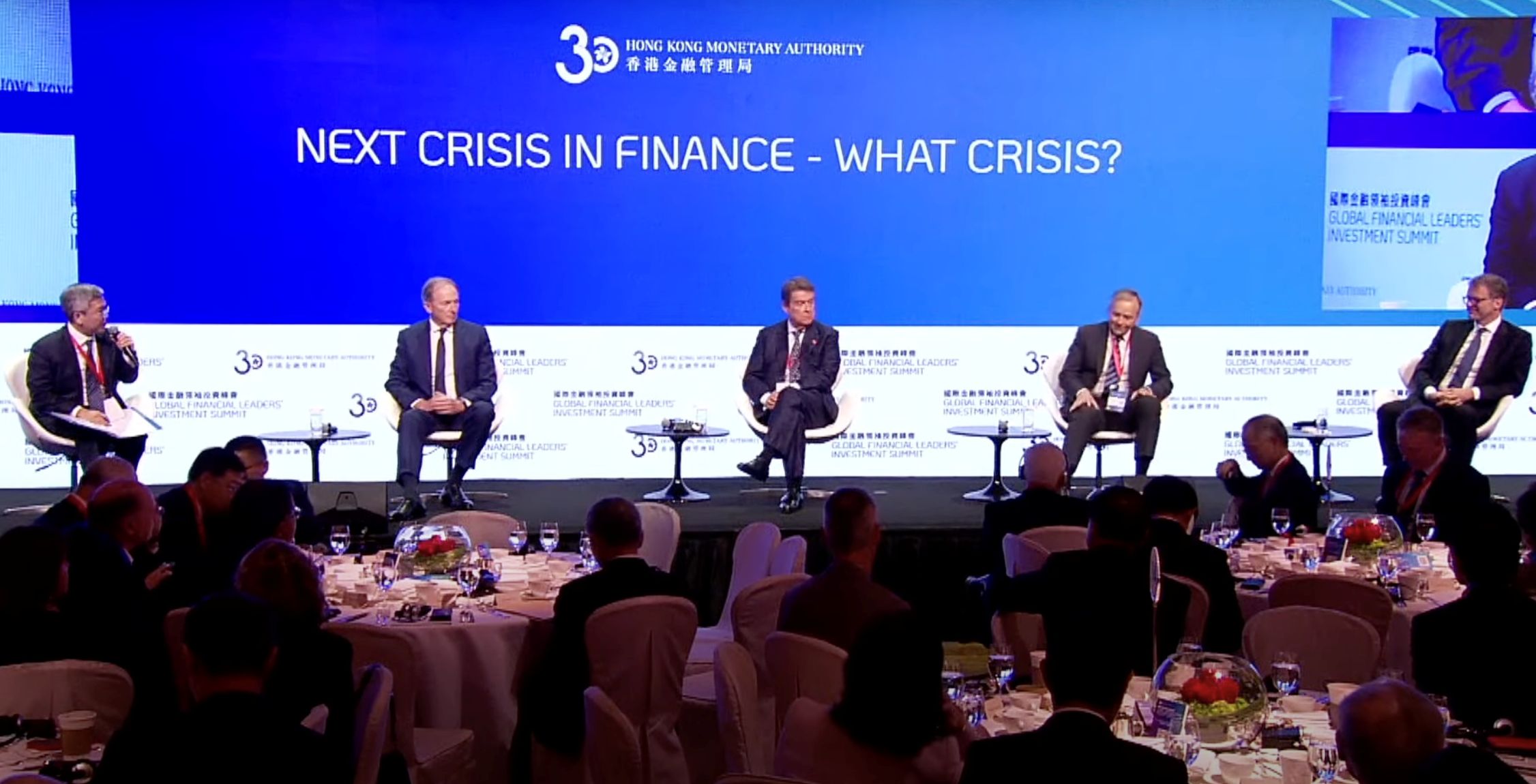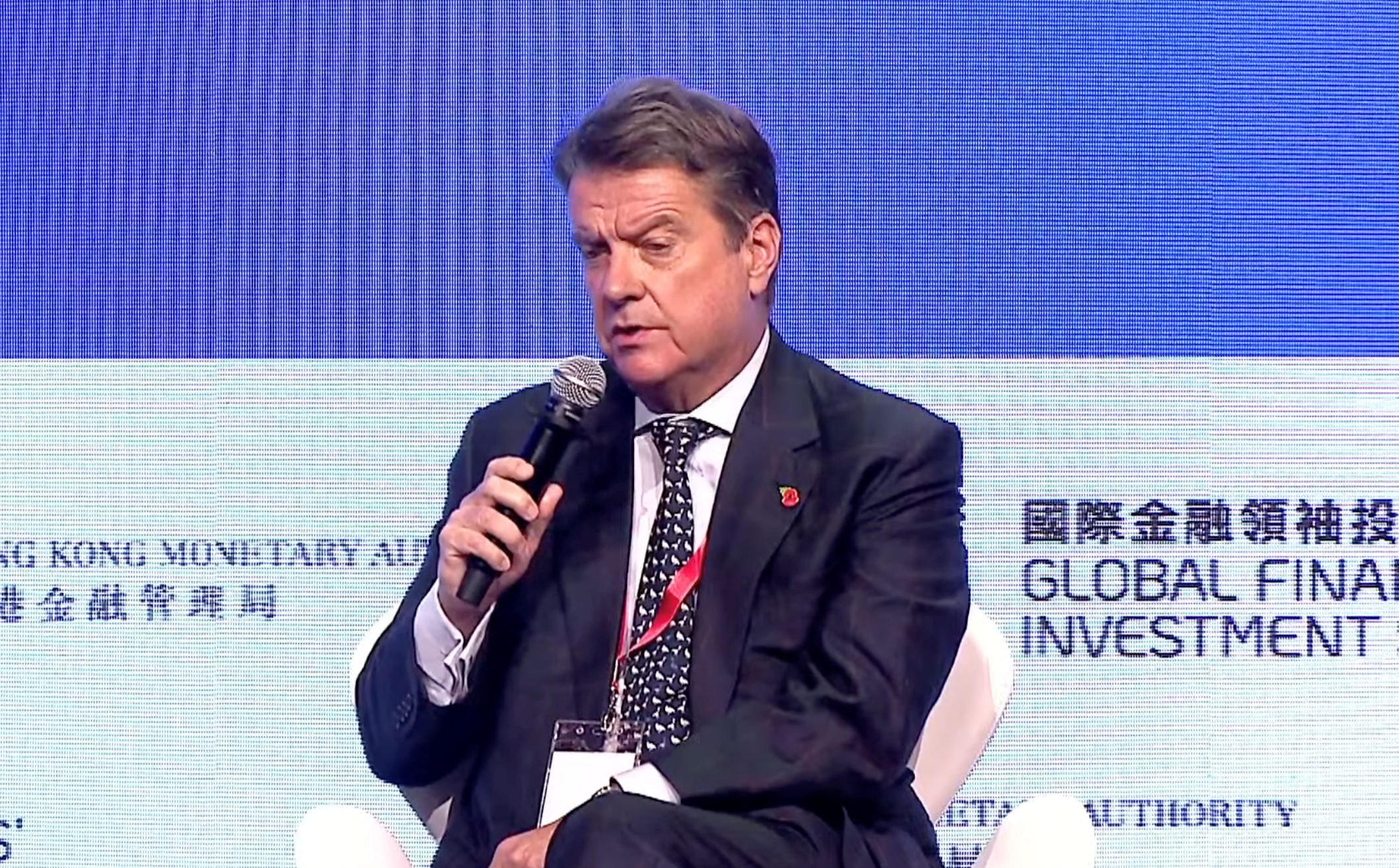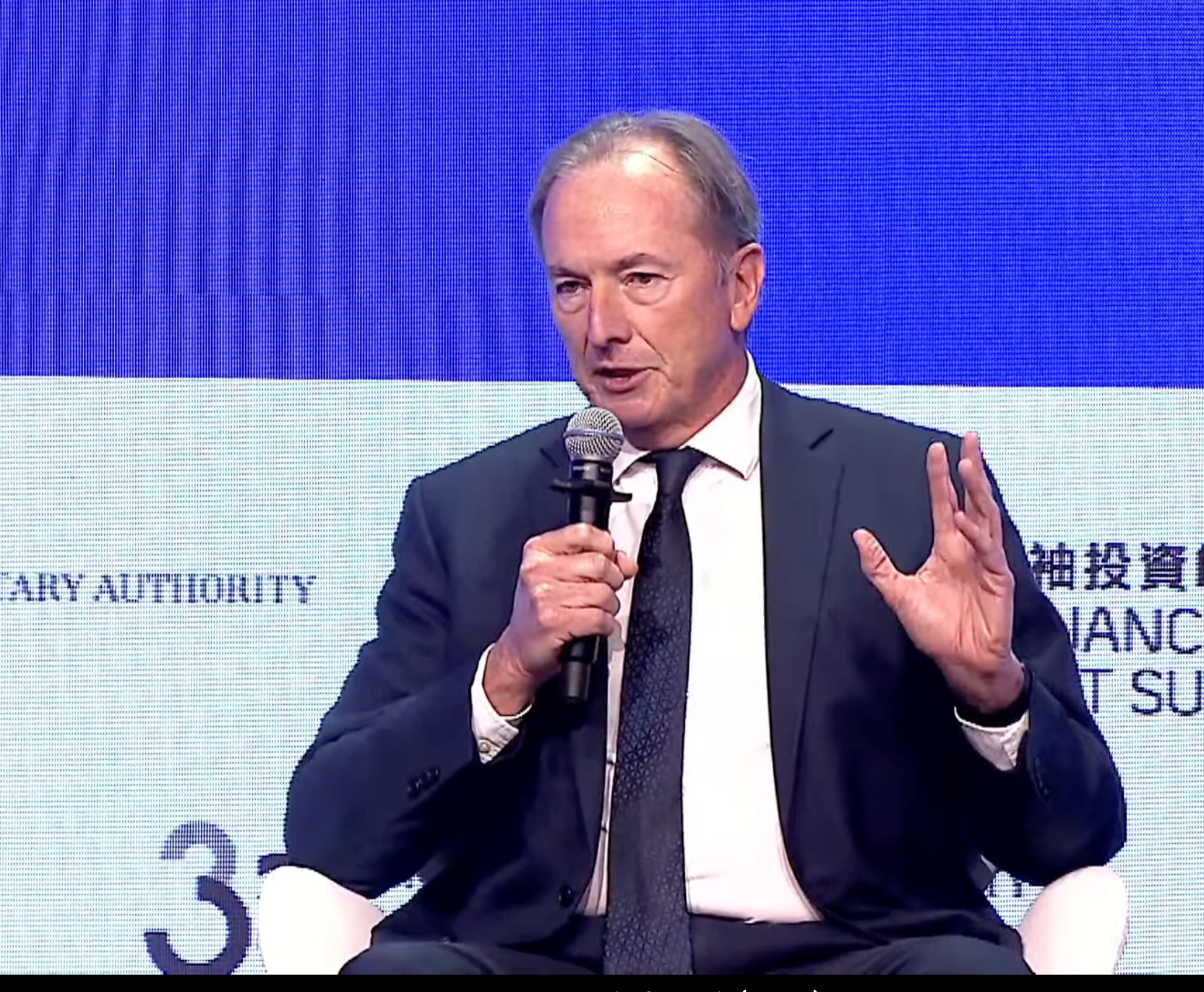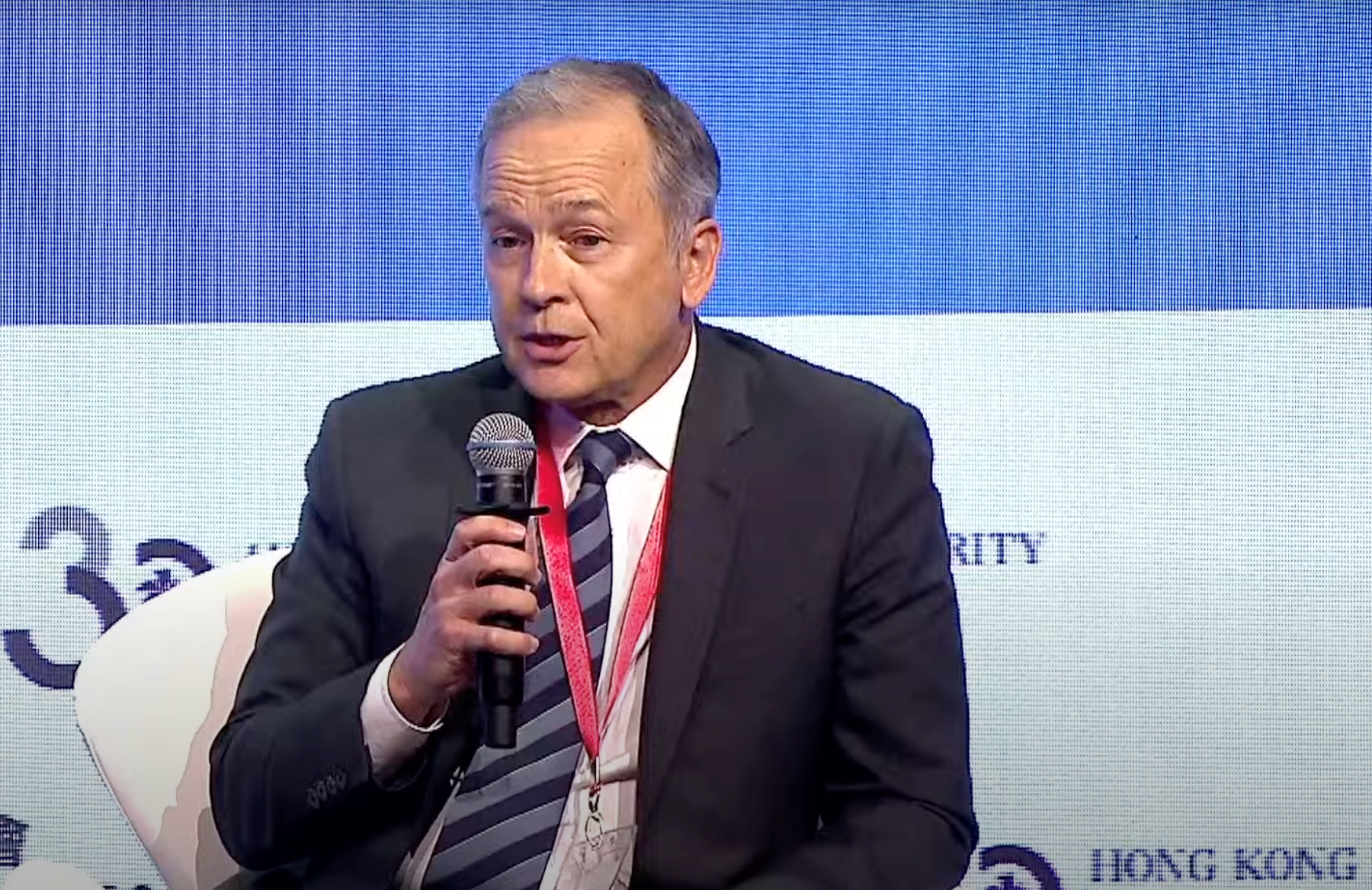

In a discussion hosted by Arthur Yuen, deputy chief executive of the Hong Kong Monetary Authority, at the Global Financial Leaders’ Investment Summit in Hong Kong, the top executives from some of the world’s largest financial institutions shared their take on where the vulnerabilities are today and potential triggers for the next financial crisis. Their replies below were edited for brevity and clarity.

State of capital markets
 Christian Sewing, CEO, Deutsche Bank
Christian Sewing, CEO, Deutsche BankObviously, it’s always hard to see the next crisis. But, to be honest, I’m nervous about the state of the capital markets. They’ve been extremely resilient. [But] if you think about what we have, what is going on in this world from a geopolitical point of view, from an inflationary point of view and where interest rates have gone over the last 12 months, then see how resilient and calm the markets are...
Last night, the crossover was at 420 basis points. This is a level that is, in my view, far away from what you would normally see in these situations. And my biggest fear is that, for instance, if there is one more geopolitical escalation – and that can happen pretty quickly – the markets at some point will actually give up that calmness and then you have a market event.
In this regard, we all need to stay very much on alert with regard to risk appetite, stress testing, and simply not make the mistake of thinking that the markets will remain calm as they are right now.
NBFIs – real cause for concern
 Colm Kelleher, chairman, UBS Group
Colm Kelleher, chairman, UBS GroupSince 2008, the number of assets that have moved out of the regulated financial sector has grown by roughly 10%. Roughly 50% of global financial assets are now in what you call non-bank financial intermediaries [NBFIs] – the shadow sector. The next crisis, when it happens, will be in that sector. It will be a fiduciary crisis.
The FSB [Financial Stability Board] is very focused on this, finally, having been told in 2009 by banks that we were being penalized too much and that they should look at the shadow banking sector. It’s a real cause for concern.
Big is better?
 James Gorman, chairman and CEO, Morgan Stanley
James Gorman, chairman and CEO, Morgan StanleyI don’t know what triggers it [the next crisis]. Nobody in this room predicted Covid. It is likely to be something political, geopolitical. The challenges to democracy in some countries around the world are pretty evident. Where the sort of weak link is, I think, is it goes back to what we saw in March [2023].
And I think we got a bit of a precursor. The policy objective is to limit the size of large banks and, by implication, support smaller banks around the world, which may be a perfectly noble policy objective. [But] from the practical reality of having these banks deal with cyber, the regulatory oversight, all of the technology investments one’s got to make to be competitive in the AI [artificial intelligence] space and so on, means that they are just less competitive.
When you put pressure on the system, the least competitive player falls back. I don't think we’ve solved this conundrum of a policy desire against the reality that when the pressure hit, it was the largest banks that came in to help. Until you resolve that, I don’t know what’s going to trigger it. But that’s the issue.
Geopolitical risk converges with debt rollovers
 Bob Prince, co-CIO, Bridgewater Associates
Bob Prince, co-CIO, Bridgewater AssociatesIf I look more broadly at the effects of the transition from 15 years of abundant free money – which was essentially necessary to battle and offset the deleveraging pressures in the financial system after 2008 and then the pandemic – we do have a number of residual effects that are particularly acute.
I would categorize some of these as long-term, some as medium-term, some as short-term influences from that regime shift. Under the category of the long term, when you look at US government treasury debt in 2008, the debt to GDP [ratio] was about 70% – around the level that it had been for decades. And with the after-effects of battling, offsetting the deleveraging pressures and the pandemic, you’ve had a massive wealth shift from the public sector to the private sector. That’s left governments with debt to GDP of from 70% up to 120%.
The particular vulnerability of that is in the debt rollovers and the gross issuance that you’re going to see in the coming decades. You’re stuck with that debt until you pay it off. And that means you have to roll it over like anybody else does. The debt rollover, the gross debt issuance will be running around 25% of GDP for as far as the eye can see.
That means every year you’re issuing 25% of GDP of debt. From 1960 to 2008, the average amount of debt issuance was 12% of GDP. So, this is not the norm. You can’t look at the last 60 years and say this is the same thing. This is different. Typically, people don’t pay much attention to the debt rollovers because we assume that the debt gets rolled over.
But actually, if you look at countries that have experienced balance of payments crises, it’s typically the inability of the rollover debt that is the source of the problem, [and] typically in emerging markets, but not always. The crucial thing to look at is the holders of the debt, because the holders are the ones that roll over the debt.
In the case of US treasury debt, 27% is held by foreign investors; 18%, by central banks. Foreign investors would normally be a reliable source of investment, but it does heighten the sensitivity to the geopolitical risk. Geopolitical risk converges with debt rollovers. The gross issuance of the US treasury is an issue that you need to pay attention to in the coming years.
It’s probably not an acute problem, but it's also an issue that is going to be with us. When you look at the 18% of the debt owned by central banks, they are not your normal buyers of bonds. They did it for policy reasons, and most central banks have [had] their fill of bonds at this point.
Will they roll over that debt? Obviously, the Fed is not doing that right now. They would probably [do it] if policy required it. So, between foreign investors and central banks, 45% of US treasury debt is held by these two groups. You have to think whether that presents a rollover risk. I would say that that’s your biggest long-term residual issue.
If I went to the medium-term residual issues, undoubtedly the 15 years of abundant free money has fuelled the private equity boom. While you probably don’t see any particular acute issues there, maybe they exist, you’d have to figure that with interest rates at, let’s say, if companies are borrowing at 8% instead of 2% or 3%, that the pace and the transaction cycle is bound to slow.
That’s already started to have some effects. When we talk to institutional investors around the world, many of them are experiencing liquidity issues right now. And the liquidity issues result from the fact that so much of that money was allocated to private assets, and now that transaction cycle has slowed. I don’t know specifically what manifestations that might cause, but that's something I’d be looking at. One kind of narrow manifestation of that is in the leveraged loan market.
The leverage loan market is an interesting market because you could go out and borrow money for five to seven years at term at a very low interest rate, interest only, and you had a bullet maturity at five or seven years. The basic idea is you pay your interest; and then after a couple of years, you just roll it out to a new five- to seven-year maturity.
But as the interest rate structure rose, now you’re left with a much greater challenge in extending the maturity of that. Now, what we see in the leveraged loan market and the high-yield market, is that the maturities within the next two years are about 16% of that market. The normal is about 8%. So, we have a little bit of a wall of maturities.